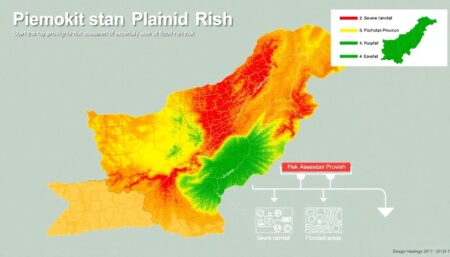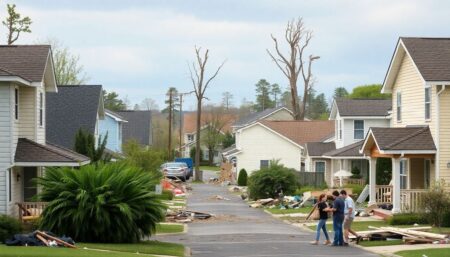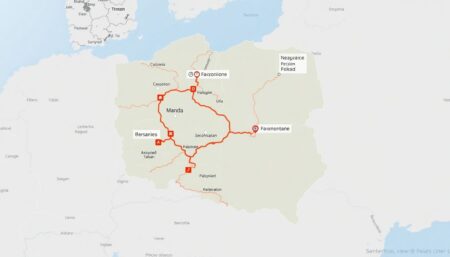Welcome to this in-depth exploration of the devastating climate disasters of 2024. This article delves into the human and financial costs of these events, highlighting the urgent need for global action. Join us as we uncover the stories behind the numbers and understand the broader implications of these catastrophes.
A comprehensive look at the year’s most devastating climate events and their global impact.
Imagine a global map, vivid and interactive, that serves as a stark reminder of the climate challenges we face. This isn’t just any map; it’s a visual representation of the top 10 climate disasters of 2024, each marked with an icon that tells a story of resilience and warning. From hurricanes swirling in the Atlantic to typhoons sweeping across the Pacific, each icon is a symbol of nature’s formidable power.
Picture this: storm icons scattered across the continents, each one a testament to the storms that have battered our coastlines. Flood icons inundate low-lying areas, a stark reminder of the rising sea levels and intense rainfall. These icons aren’t just markers; they’re calls to action, highlighting the urgent need for climate adaptation and mitigation.
But this map isn’t just about doom and gloom. It’s about awareness, about understanding the patterns and impacts of climate disasters. By visualizing these events, we can better prepare, better respond, and better protect our communities. This map is a tool for change, a visual narrative that reminds us of our shared responsibility to protect our planet.

The Financial Toll of Climate Disasters
The year 2024 has been marked by unprecedented climate disasters, with the top 10 events alone culminating in a staggering $229 billion in damages. These events, ranging from catastrophic hurricanes to devastating wildfires, have not only left a trail of destruction but also sent shockwaves through global economies. The United States, in particular, has borne the brunt of these disasters, with a disproportionate impact that has strained regional economies and critical infrastructure.
The economic fallout from these events is multifaceted. Firstly, the immediate costs include damage to property, infrastructure, and businesses. However, the ripple effects extend far beyond the initial impact. Supply chain disruptions, loss of productivity, and increased public spending on recovery efforts exacerbate the economic toll. For instance, the devastation caused by a single Category 5 hurricane can paralyze entire industries, leading to job losses and reduced economic output.
Insurance payouts play a pivotal role in assessing these costs. In 2024, insurance companies are expected to pay out a significant portion of the $229 billion in damages. These payouts are crucial for several reasons:
- They provide a financial lifeline to affected individuals and businesses, aiding in recovery and rebuilding.
- They offer a tangible measure of the economic impact, as payouts reflect the value of insured losses.
- They highlight the role of the insurance industry in risk management and mitigation.
However, it is essential to note that insurance payouts do not capture the full extent of the economic burden, as uninsured losses and long-term economic effects often go unaccounted for.
The broader economic implications of these climate disasters are profound. The concentration of damage in the U.S. has led to a strain on federal and state budgets, diverting funds from other critical areas such as education and healthcare. Moreover, the frequency and intensity of these events have raised concerns about the long-term sustainability of economic growth in affected regions. Businesses are increasingly factoring climate risk into their decision-making processes, which could lead to shifts in investment patterns and economic activity. The year 2024 serves as a stark reminder of the urgent need for climate resilience and adaptation strategies to mitigate the economic impacts of future disasters.

Human Impact and Global Heat
In the sprawling landscape of human tragedy, the 2,000 lives lost to recent disasters serve as a grim reminder of our vulnerability in the face of nature’s wrath. Behind this stark number are individual stories of loss, courage, and despair. Consider Maria, a resident of Lytton, Canada, who lost her home and her husband to the record-breaking heat dome that scorched the region. She remembers the day the fire swept through, ‘It was like the end of the world,’ she recalls, her voice heavy with emotion. ‘The heat was unbearable, and then the fire came. I lost everything that day.’
The global heat record is not just a statistic; it’s a harbinger of the devastating impact that extreme temperatures can have on communities. Scientists have drawn direct correlations between the increasing frequency and intensity of heatwaves and the escalating severity of natural disasters. In Oregon, the story of the Bootleg Fire is a testament to this. The fire, fueled by extreme heat and drought, consumed over 400,000 acres, leaving families displaced and livelihoods shattered. ‘We’ve never seen anything like this,’ says local firefighter, John. ‘The heat is making these fires unpredictable and almost impossible to control.’
The emotional toll on communities is immeasurable. In the aftermath of the floods in Germany, which claimed hundreds of lives, survivors grapple with the trauma. ‘I lost my sister and my best friend,’ says Anna, her voice breaking. ‘The water rose so fast, there was no time to react.’ Stories like Anna’s are echoed in communities around the world, a stark reminder of the human cost of these disasters.
- Loss of life: The most devastating impact is the loss of life. Each number is a person with a story, a family, and a community.
- Displacement: Survivors are often left homeless, uprooting their lives and causing long-term emotional trauma.
- Economic impact: Livelihoods are shattered, businesses are lost, and communities are left to rebuild from the ground up.
As we grapple with the reality of a warming world, it’s crucial to remember the people behind the statistics. Each life lost is a tragedy, each community affected is a call to action. From Maria in Lytton to Anna in Germany, their stories serve as a stark reminder of the human cost of our changing climate. As we move forward, we must prioritize empathy, support, and resilience, standing together in the face of these challenges. Only then can we hope to mitigate the devastating impact of these disasters and build a safer, more sustainable future for all.

Scientific Insights and Climate Change
In recent years, the scientific community has increasingly pointed to the role of fossil fuels and human-induced climate change in the frequency and intensity of natural disasters. According to the Intergovernmental Panel on Climate Change (IPCC), the global temperature has risen by about 1 degree Celsius since pre-industrial times, largely due to the burning of fossil fuels, which releases heat-trapping greenhouse gases into the atmosphere.
Several studies have drawn direct links between these emissions and extreme weather events. For instance, a study published in Nature Climate Change found that human influence has made heatwaves in some regions, such as Europe and the Mediterranean, at least four times more likely. Similarly, research from the World Weather Attribution initiative showed that climate change has exacerbated the frequency and severity of heavy rainfall events, leading to catastrophic flooding.
Expert opinions echo these findings. Dr. Michael Mann, a distinguished professor of atmospheric science at Penn State, states that ‘the science is clear that climate change is real, human-caused, and worsening.’ He warns that without significant reductions in fossil fuel use, we can expect more frequent and intense heatwaves, droughts, wildfires, and coastal flooding.
Key climate trends underscore these points:
- The past decade was the warmest on record, with 2016 and 2020 tied for the warmest years.
- Sea levels have risen by about 20 cm since the late 19th century, with about one-third of that rise occurring in the last two and a half decades.
- The frequency and intensity of heavy downpours have increased in many regions, leading to more flooding events.
These trends, coupled with expert analyses, paint a clear picture of the profound impact that fossil fuels and human-caused climate change have on the increasing severity of natural disasters.

Global Response and Policy Implications
The global response to climate-driven disasters has been a mix of alarm, resolve, and, unfortunately, political tension. Calls for emission reductions have echoed from all corners of the globe, with activists, scientists, and progressive politicians leading the charge. The Intergovernmental Panel on Climate Change (IPCC) has repeatedly stressed the need for immediate and drastic cuts to greenhouse gas emissions. However, the response from different countries has varied significantly.
Some nations have taken ambitious strides forward. The European Union, for instance, has committed to reducing its emissions by at least 55% by 2030, compared to 1990 levels. Similarly, the Biden administration in the US has pledged to cut emissions by 50-52% by 2030, compared to 2005 levels. Yet, these commitments are not universal. Some countries, driven by short-term economic interests or political ideologies, have been slow to act, highlighting the need for increased international pressure and cooperation.
Vulnerable countries, often those least responsible for historical emissions, are now facing the brunt of climate impacts. They have rightfully demanded increased compensation from the global community. This includes not only financial aid for mitigation and adaptation efforts but also technologies and resources to build resilience. The UNFCCC’s Green Climate Fund was a step in this direction, but it remains underfunded and mired in bureaucracy. The slow pace of compensation has led to frustrations, with some leaders calling out the hypocrisy of wealthy nations.
International cooperation is paramount in the face of these challenges. Political choices made today will shape the climate of tomorrow. Here’s what’s needed:
- A strengthened Paris Agreement, with binding emission targets and penalties for non-compliance.
- Increased financial and technological support for vulnerable countries.
- More ambitious Nationally Determined Contributions (NDCs) from all countries.
- A global pact to phase out fossil fuels and transition to renewable energy.
- Investment in climate education and awareness to foster a global citizenry that demands climate action.
The climate crisis is a global problem that requires a united global response. It’s time for political choices to reflect this reality.
FAQ
What are the most costly climate disasters of 2024?
How does climate change contribute to these disasters?
What is the role of insurance payouts in assessing climate disaster costs?
What are the broader implications of these disasters?
What can be done to mitigate future climate disasters?
- Reduce emissions by transitioning to renewable energy sources.
- Increase compensation and support for vulnerable countries.
- Strengthen international cooperation and policy initiatives.
- Promote public awareness and education on climate change.









